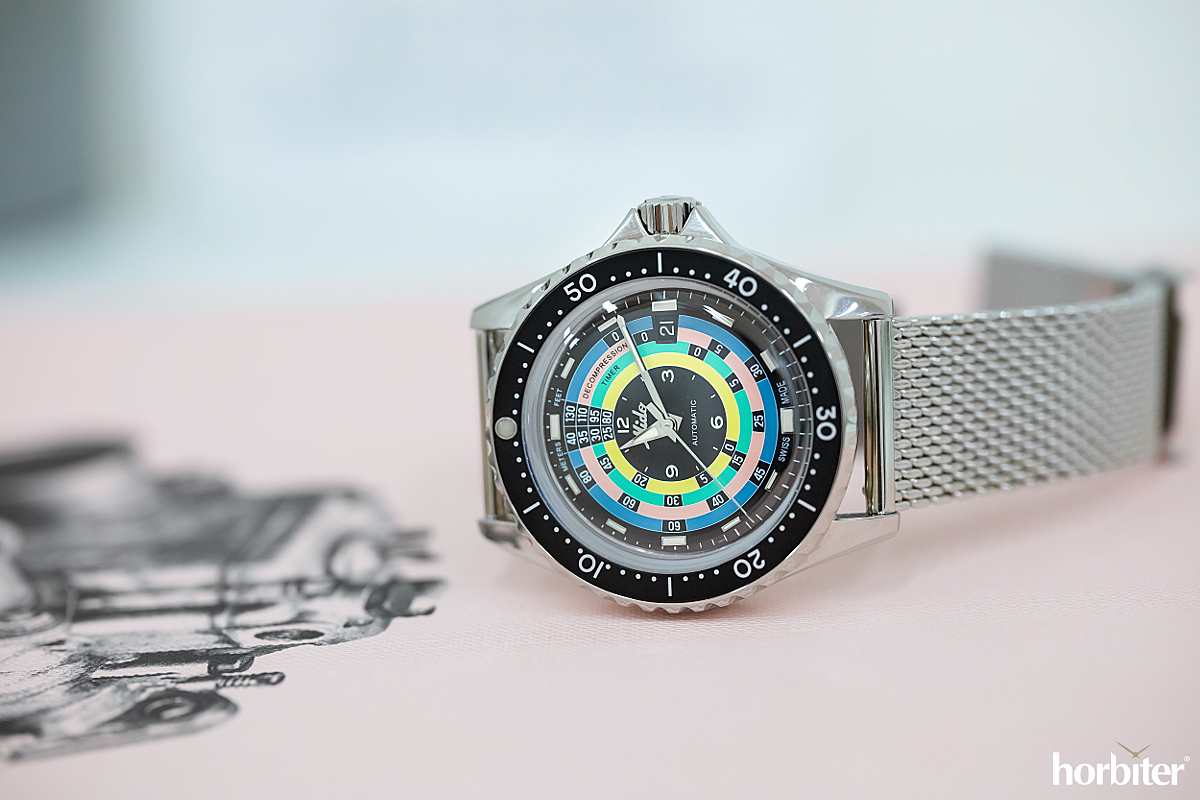How hard is it to conceive an innovative product in today’s watch industry? It indeed is, even more so, when you’re required to combine an attractive price point with top-notch specifications, reliability, and build quality. When I used to work in the automotive industry, making a small car was far more challenging than designing the next sports car; the same holds when crafting a new timepiece.
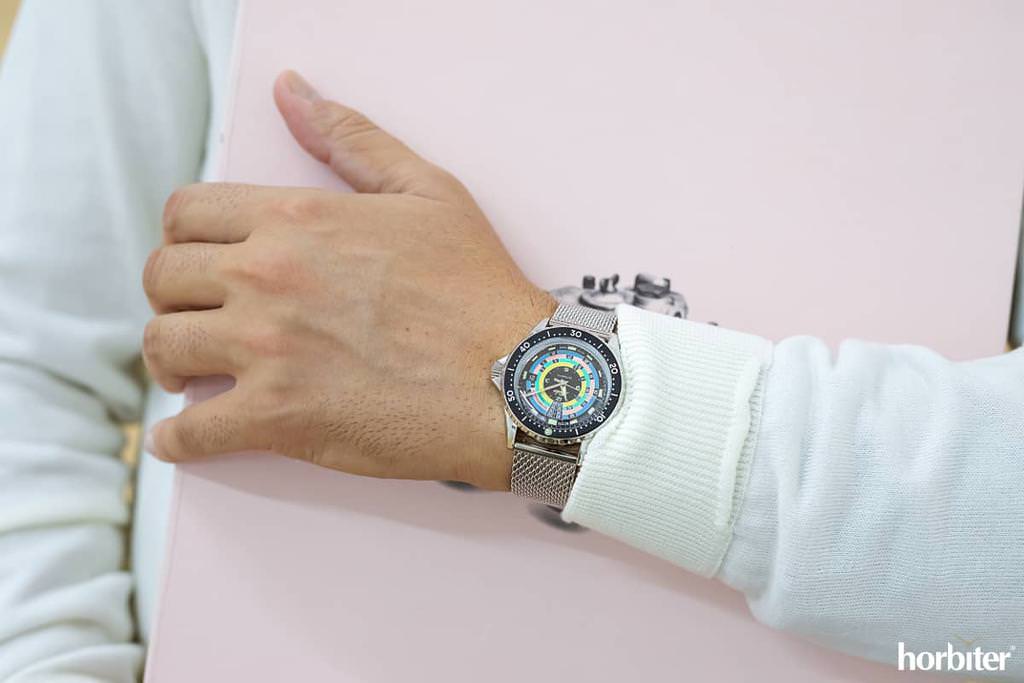 From a communication and ad campaign standpoint, Mido‘s approach to the Italian market has so far promoted sturdiness, no-frills design, above-the-average performance, and competitive price point. I feel this strategy has slightly changed in the last couple of years or so. With the Ocean Star Tribute, the Swiss brand joined the neo-vintage trend, reinforcing the Ocean Star‘s market success; consequently, the Tribute works as a range extender, building on Mido‘s archive, which is as vast as uncovered.
From a communication and ad campaign standpoint, Mido‘s approach to the Italian market has so far promoted sturdiness, no-frills design, above-the-average performance, and competitive price point. I feel this strategy has slightly changed in the last couple of years or so. With the Ocean Star Tribute, the Swiss brand joined the neo-vintage trend, reinforcing the Ocean Star‘s market success; consequently, the Tribute works as a range extender, building on Mido‘s archive, which is as vast as uncovered.
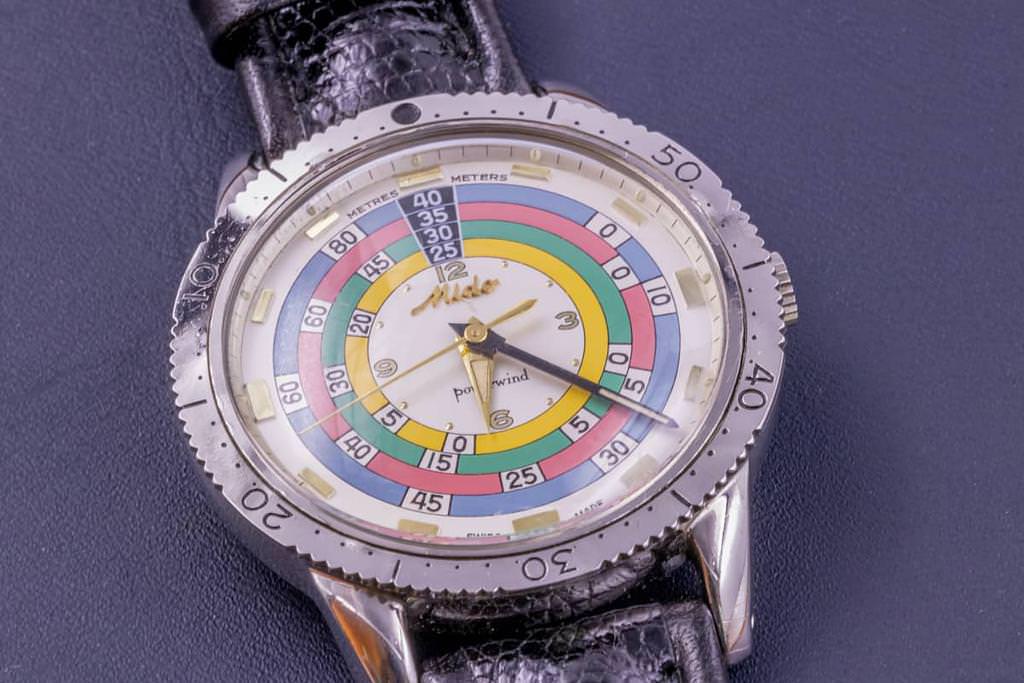 In 1961, Mido introduced the Decompression Timer, a Skin Diver based diving watch, featuring the patented Powerwind winding mechanism and a steel bracelet so cool to presumably inspire the 2020 Klip modern sibling by Forstner Bands, a leading vintage replacement straps manufacturer. Unexpectedly, the Mido Ocean Star Powerwind Rainbow 5907 reissue is not celebrating any anniversary, yet it aims to promote and extend the Tribute‘s success with a hot new reference.
In 1961, Mido introduced the Decompression Timer, a Skin Diver based diving watch, featuring the patented Powerwind winding mechanism and a steel bracelet so cool to presumably inspire the 2020 Klip modern sibling by Forstner Bands, a leading vintage replacement straps manufacturer. Unexpectedly, the Mido Ocean Star Powerwind Rainbow 5907 reissue is not celebrating any anniversary, yet it aims to promote and extend the Tribute‘s success with a hot new reference.
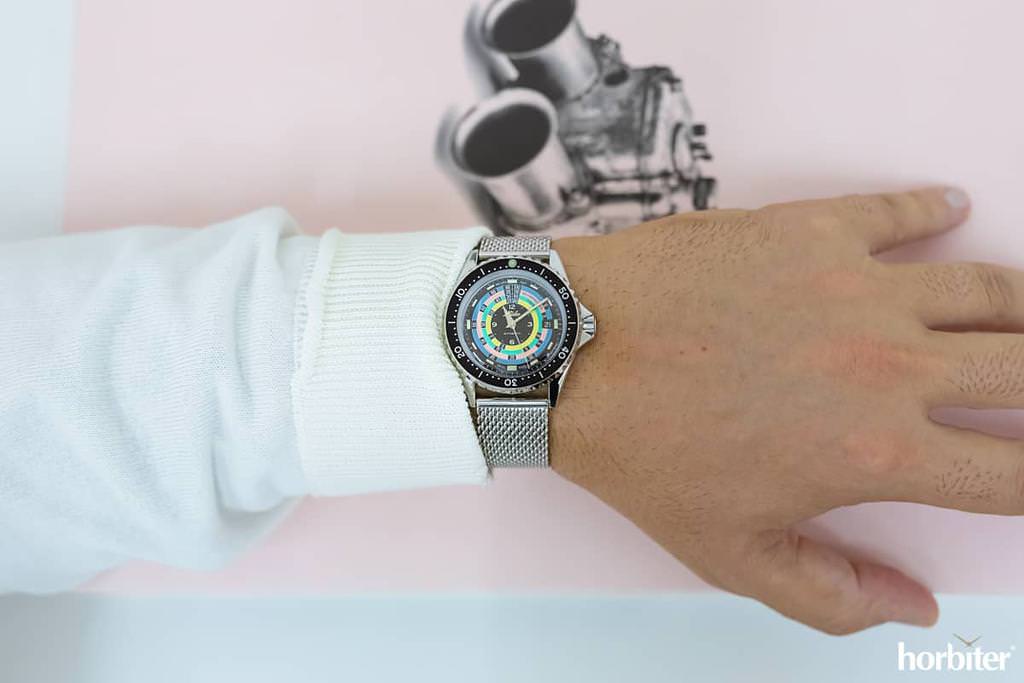 Mido will produce 1961 Decompression Timer watches, which is not huge considering how big the Swatch Group‘s brand’s industrial capability is. Prove me wrong, but I perceive this is a “halo product” conceived to raise brand awareness rather than boosting sales. Between the end of 2019 and the first two months of 2020, I had the chance to team up with Mido during three training sessions, and, back then, I found out the brand is respected and much-coveted among vintage collectors. Please bear in mind the original reference 5907 is close to hitting the ten-thousand threshold (not to mention the vintage references carrying the Bugatti or Ford logos).
Mido will produce 1961 Decompression Timer watches, which is not huge considering how big the Swatch Group‘s brand’s industrial capability is. Prove me wrong, but I perceive this is a “halo product” conceived to raise brand awareness rather than boosting sales. Between the end of 2019 and the first two months of 2020, I had the chance to team up with Mido during three training sessions, and, back then, I found out the brand is respected and much-coveted among vintage collectors. Please bear in mind the original reference 5907 is close to hitting the ten-thousand threshold (not to mention the vintage references carrying the Bugatti or Ford logos).
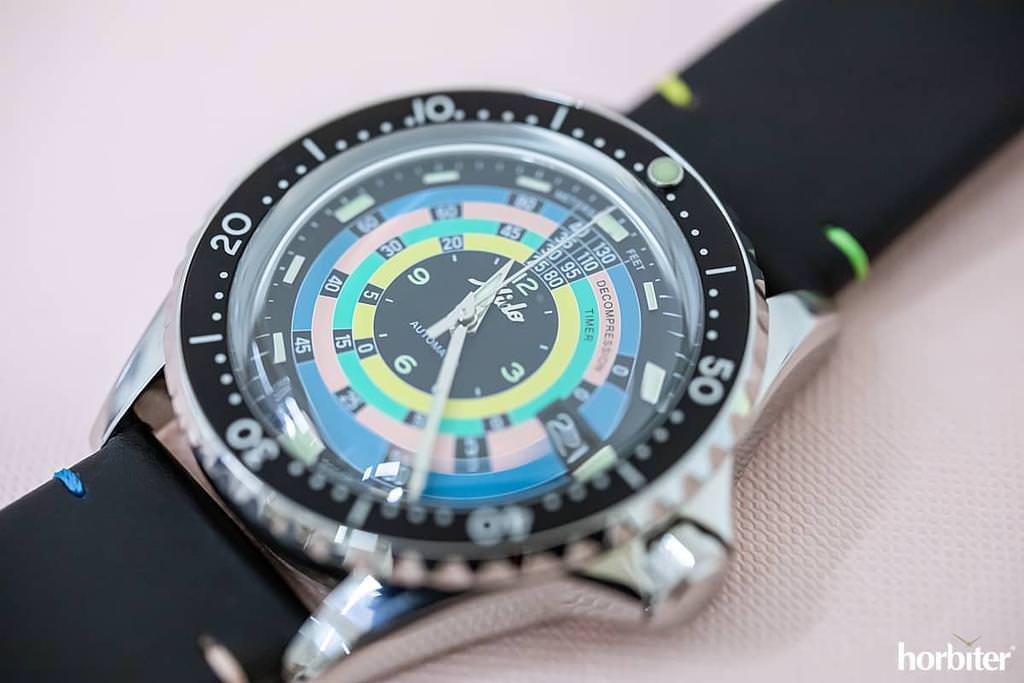 Style is the primary buying trigger. The 2020 Decompression Timer is no different, yet its design looks outrageous when placed alongside a standard modern-looking Mido watch; it’s a kind of breakthrough for the brand. The multi-layered and colorful decompression times map is so distinctive the original watch soon became known as the “Mido Rainbow.” The only timepiece whose layout is as multicolored, from afar, is an Orient King Diver from the 60s. The Swiss brand aims to break the rules by offering less understated and more daring designs if you ask me.
Style is the primary buying trigger. The 2020 Decompression Timer is no different, yet its design looks outrageous when placed alongside a standard modern-looking Mido watch; it’s a kind of breakthrough for the brand. The multi-layered and colorful decompression times map is so distinctive the original watch soon became known as the “Mido Rainbow.” The only timepiece whose layout is as multicolored, from afar, is an Orient King Diver from the 60s. The Swiss brand aims to break the rules by offering less understated and more daring designs if you ask me.
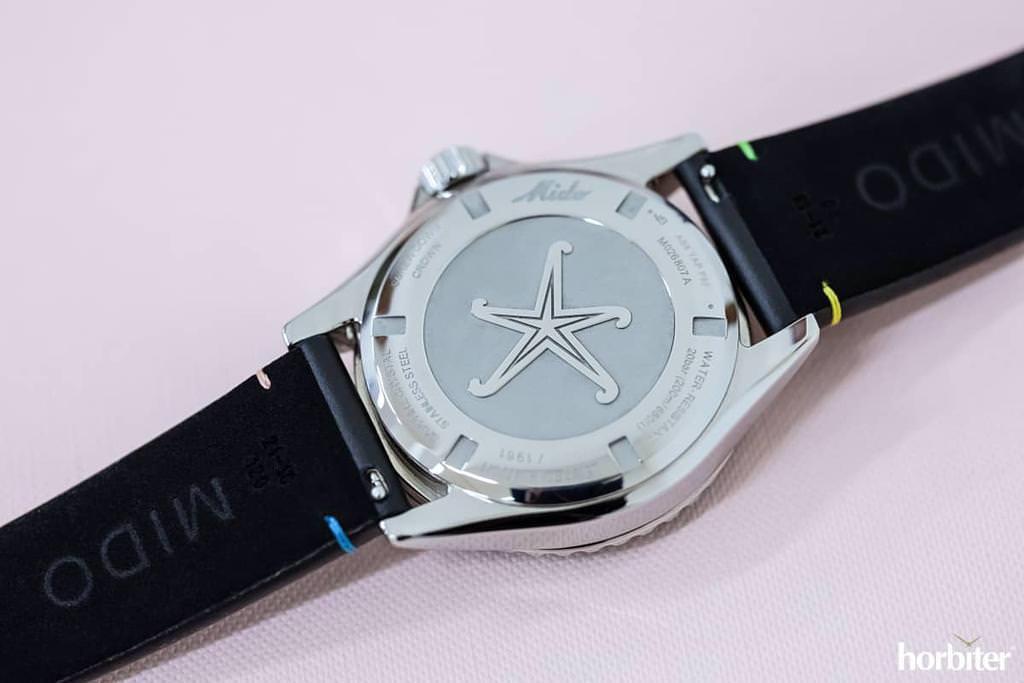 By adopting an Ocean Tribute‘s case, Mido marketing specialists paired family feeling with parts standardization and a contemporary look and feel. Unlike the Mido 5907, which was offered either with a meter or feet scale, according to different markets, the Mido Decompression Timer 1961 comes standard with a double scale in meters and feet. It also includes all the modern attributes, like Super–Luminova™, a sapphire glass box, a quick-change bracelet, and the outstanding caliber 80.
By adopting an Ocean Tribute‘s case, Mido marketing specialists paired family feeling with parts standardization and a contemporary look and feel. Unlike the Mido 5907, which was offered either with a meter or feet scale, according to different markets, the Mido Decompression Timer 1961 comes standard with a double scale in meters and feet. It also includes all the modern attributes, like Super–Luminova™, a sapphire glass box, a quick-change bracelet, and the outstanding caliber 80.
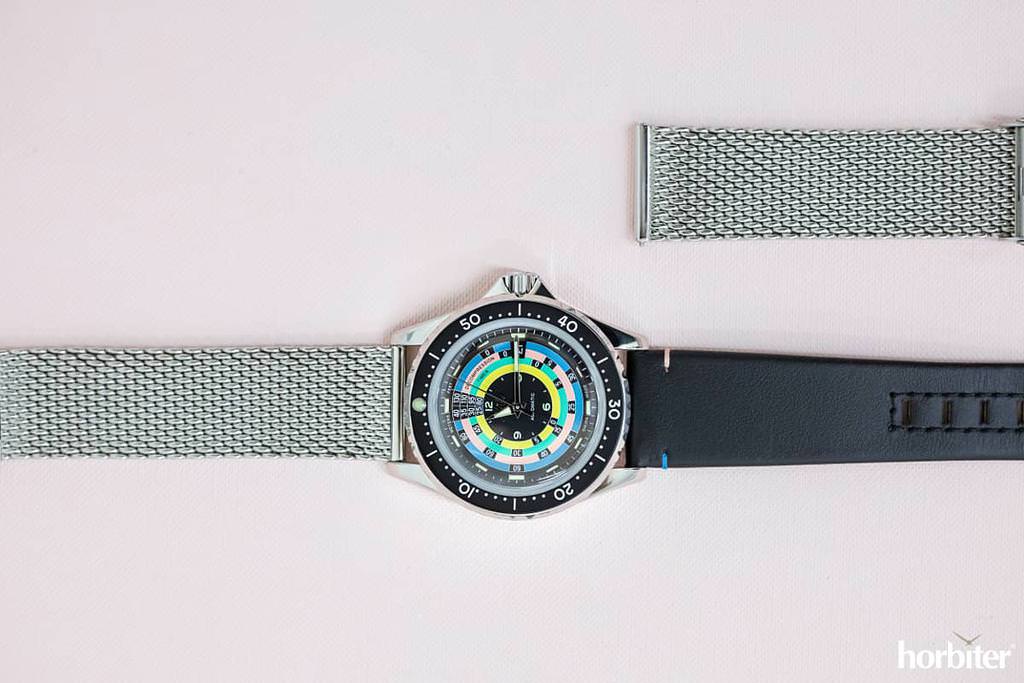 Interestingly enough, the watch comes in a limited edition package, including three bracelet options, a mesh bracelet, two replacement straps, one in leather, and the other in fabric. The Decompression Timer 1961 is the kind of timepiece you either love or hate, and the three-strap option makes it adaptable for every scenario, from diving to chilling. Snap the steel bracelet on, and it’ll wear larger than the rated 40,5mm, while the leather strap option, which I prefers, softens colors and size down. The mesh bracelet is aesthetically pleasing, but it is too ordinary.
Interestingly enough, the watch comes in a limited edition package, including three bracelet options, a mesh bracelet, two replacement straps, one in leather, and the other in fabric. The Decompression Timer 1961 is the kind of timepiece you either love or hate, and the three-strap option makes it adaptable for every scenario, from diving to chilling. Snap the steel bracelet on, and it’ll wear larger than the rated 40,5mm, while the leather strap option, which I prefers, softens colors and size down. The mesh bracelet is aesthetically pleasing, but it is too ordinary.
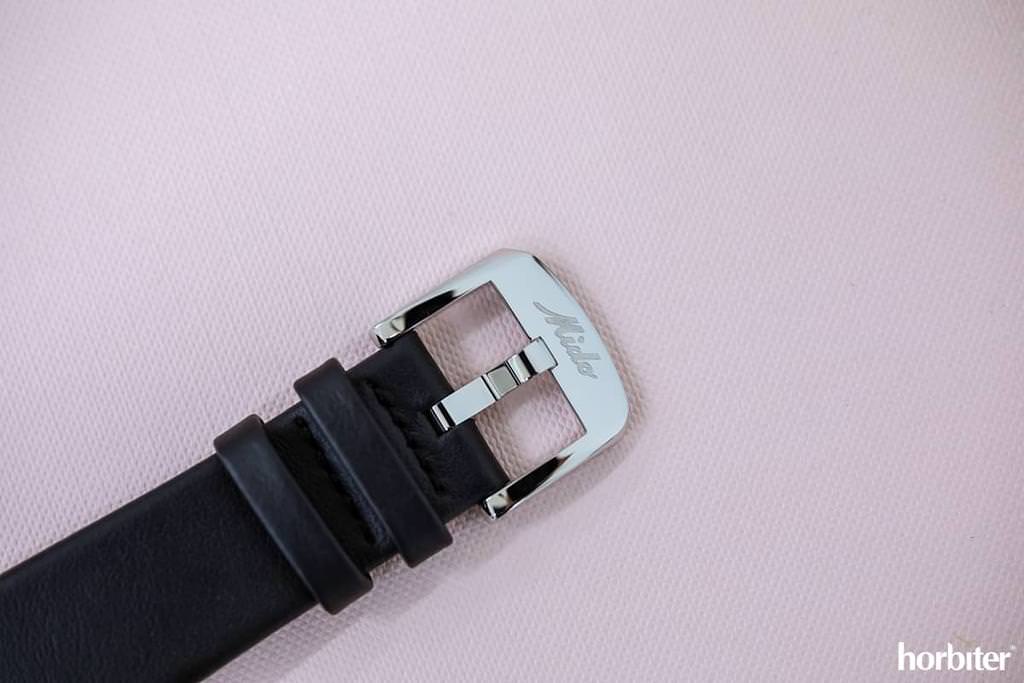 The Mido Decompression Timer 1961 retails for 1.150 Euros; among its pros, I’ll list the unique design (which is subjective), proven quality build, and an unrivaled offering of bracelets and straps. Among the “missed opportunities,” a far-from-the-original style sits on top of the list, by listening to various watch aficionados.
The Mido Decompression Timer 1961 retails for 1.150 Euros; among its pros, I’ll list the unique design (which is subjective), proven quality build, and an unrivaled offering of bracelets and straps. Among the “missed opportunities,” a far-from-the-original style sits on top of the list, by listening to various watch aficionados.
When reissuing a watch from the past, two are the options: one-to-one reissue or inspiration. Mido opted for the second one, which makes sense from a mission statement standpoint, family feeling across collections, and, as stated above, product standardization, which helps keep the retail price attractive and close to the one-thousand Euro threshold.
(Photo credit: Mido, Horbiter®)
Gaetano C @Horbiter®
